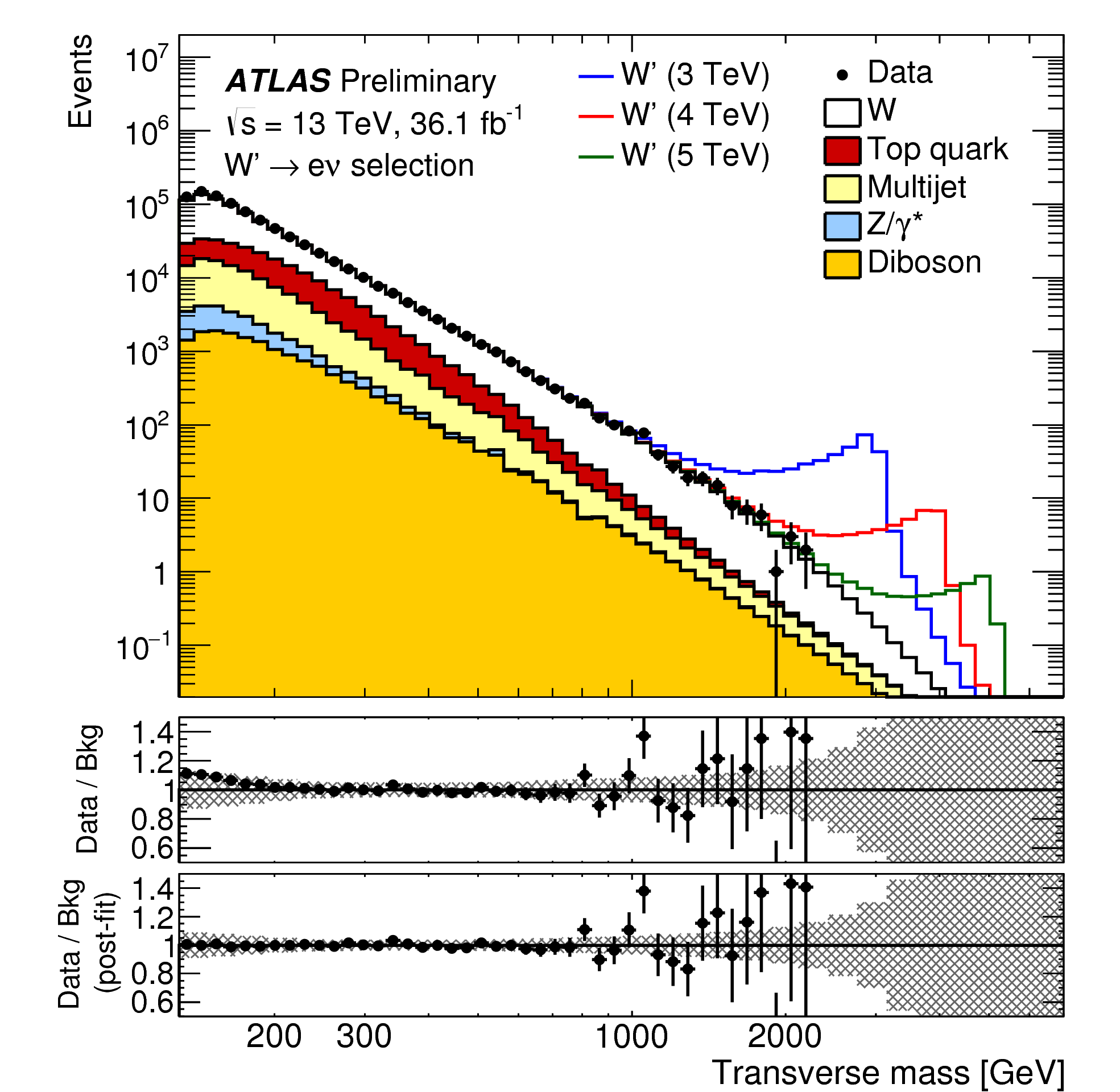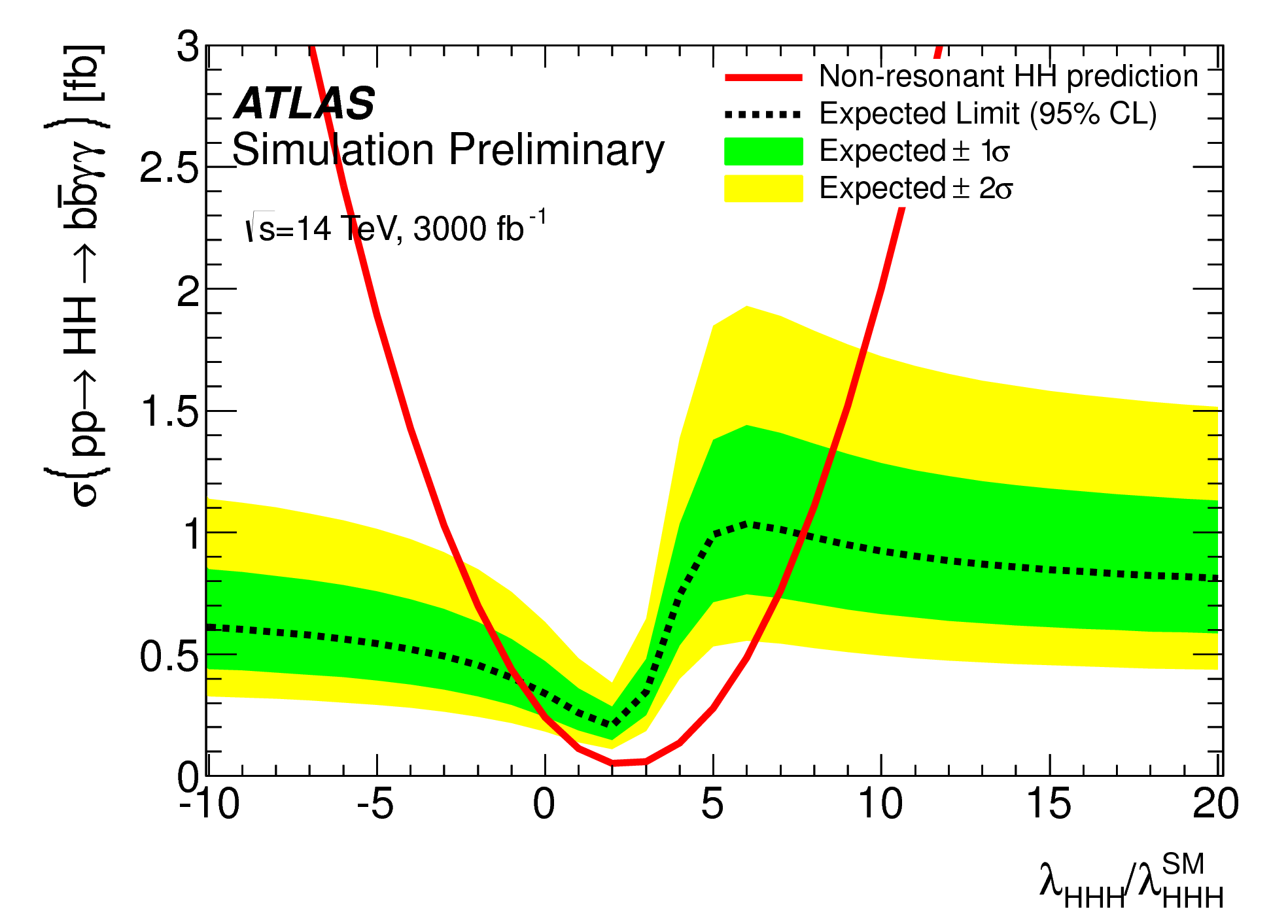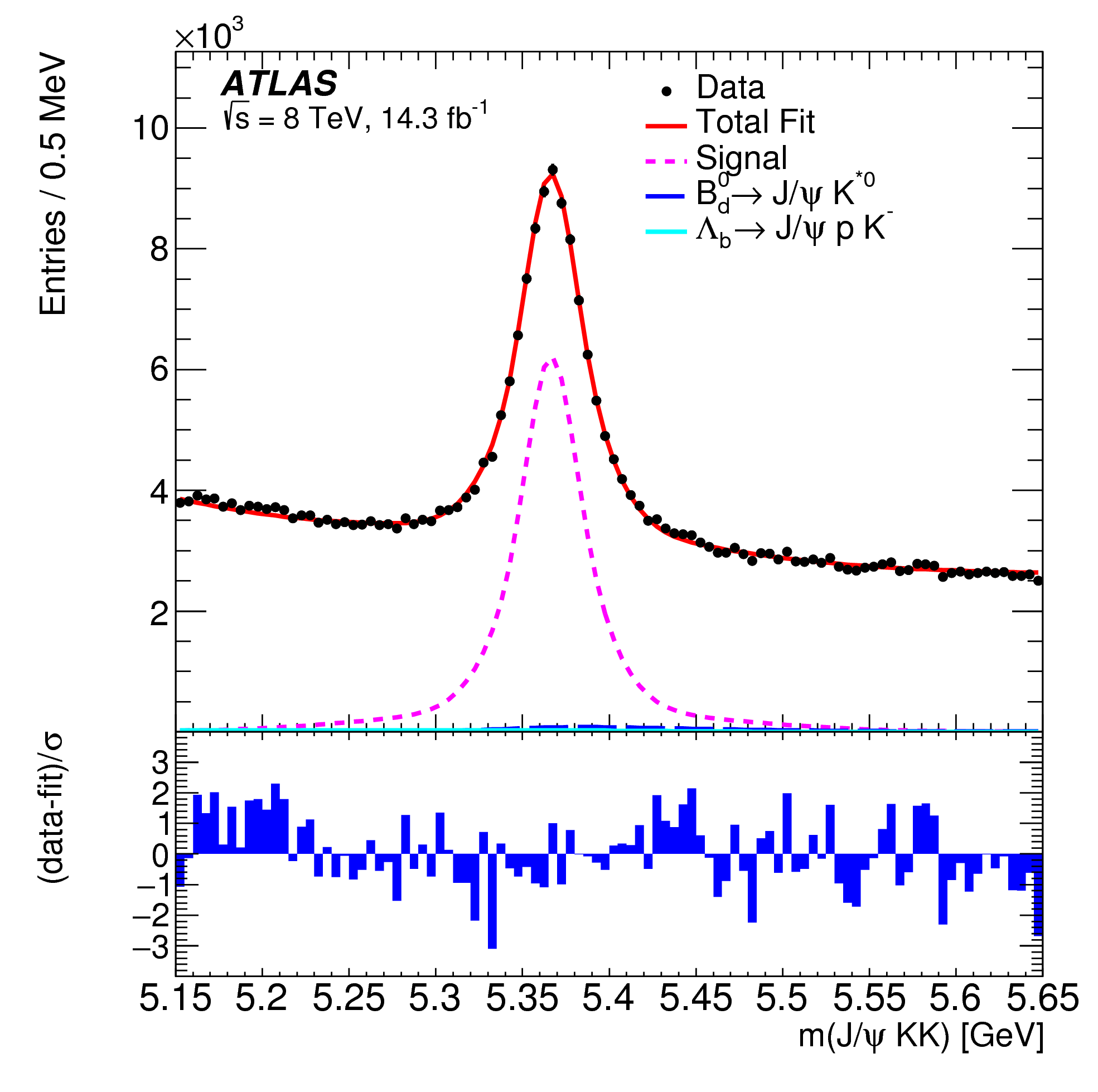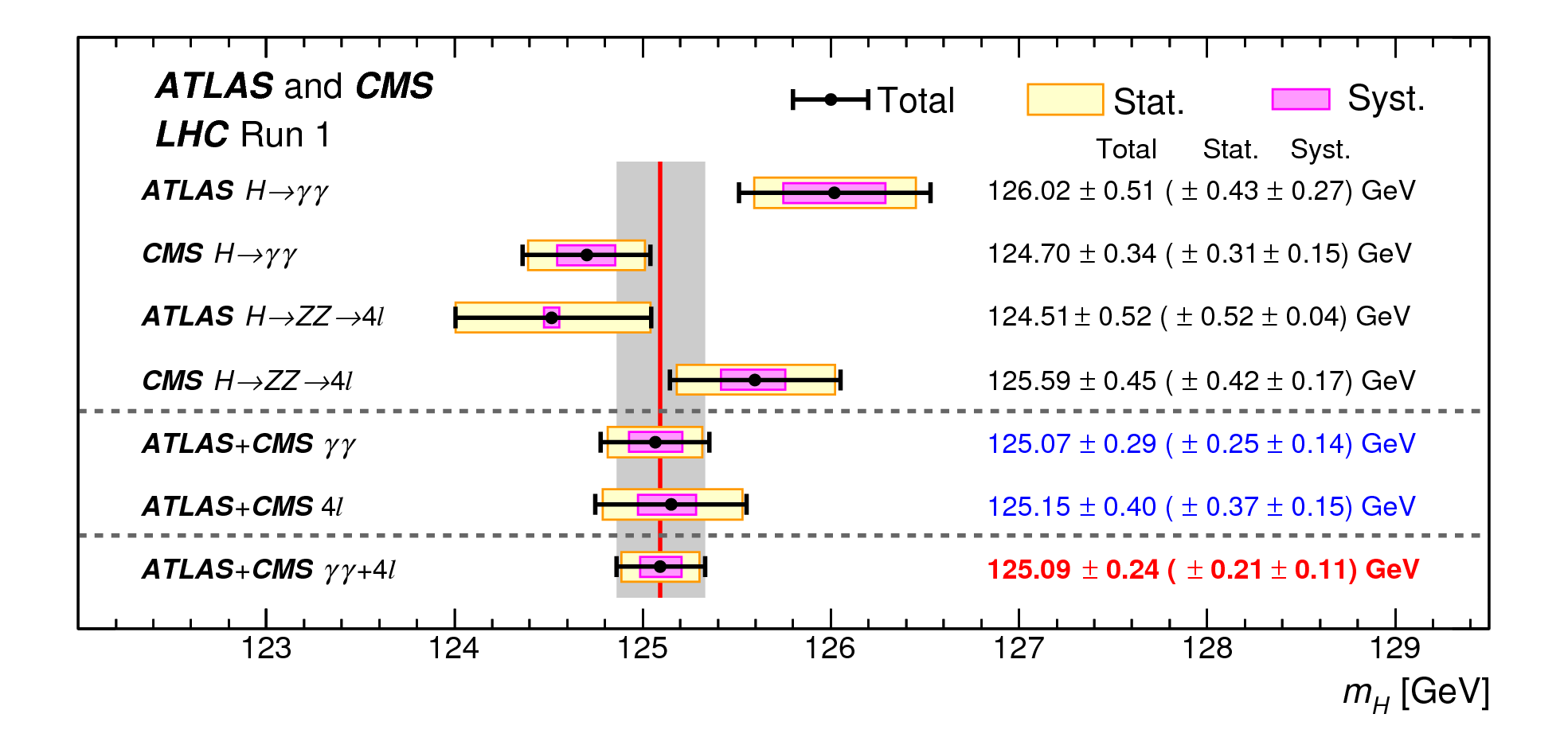At RAL, the ATLAS group is heavily involved in the silicon tracker, the first-level calorimeter trigger and the software-based higher-level trigger. Besides these activities, we are also participating in the ATLAS physics analysis in the areas of B-physics, Higgs measurements and searches for new heavy bosons. People from our group hold or held significant coordinating roles in the ATLAS and ATLAS-UK physics and performance groups.
Bill Murray is a former ATLAS physics coordinator and a former Higgs coordinator. John Baines is one of the former B-physics group coordinators and Monika was Higgs prospects subgroup convenor. Alastair Dewhurst and Julie Kirk were ATLAS UK B-physics coordinators. Both Stephen Haywood and Monika Wielers were convenors for the electron and photon combined performance groups.
W' SEARCHES
At RAL, we are heavily involved in searches for additional heavy bosons, which are postulated in various beyond Standard Model extentions. In particular, we are searching for charged W' bosons decaying into a lepton and a neutrino or into two W or Z bosons. The first analysis uses events with a high transverse momentum electron or muon and significant missing transverse momentum ETmiss and the signal discriminant is the transverse mass. As no excess of events above the expected level of Standard Model predictions is observed, the results are used to set upper limits on the W' boson cross-section times branching ratio to an electron or muon and a  neutrino as a function of the W' mass. Assuming a W' boson with the same couplings as the Standard Model W boson, W' masses below 5.6 TeV are excluded at the 95% confidence level. The team at RAL contributed to the editing of several W' papers, the study of electron and muon isolation, the validation of some of the simulated samples and the preparation of event displays.
neutrino as a function of the W' mass. Assuming a W' boson with the same couplings as the Standard Model W boson, W' masses below 5.6 TeV are excluded at the 95% confidence level. The team at RAL contributed to the editing of several W' papers, the study of electron and muon isolation, the validation of some of the simulated samples and the preparation of event displays. The second analysis we are contributing is done by looking for W and Z bosons decaying into ννqq, lνqq, llqq and qqqq final states, with the RAL team concentrating on the four-quark final state. The discriminating variable is either an invariant mass or a transverse mass. Three benchmark models are tested: a model predicting the existence of a new heavy scalar singlet, a simplified model predicting a heavy vector-boson triplet, and a bulk Randall-Sundrum model with a heavy spin-2 graviton. More information can be found in our
latest paper (link opens in a new window).
As no significant deviations from the Standard Model predictions are observed, cross-section limits are set at the 95% confidence level. Using 3.2 fb-1 of data taken in 2015 at a centre of mass energy of 13 TeV, a scalar singlet with a mass below 2650 GeV, a heavy vector-boson triplet with a mass below 2600 GeV, and a graviton with a mass below 1100 GeV are excluded.
PEOPLE INVOLVED: Tim Adye, Graham Gee, Julie Kirk, Monika Wielers, Bill Murray
UPGRADE PHYSICS
Given the major hardware commitments we have in PPD for the HL-LHC upgrade, we are also participating in the upgrade physics programme. One of the major goals of the upgrade is to measure the di-Higgs boson production mode. This model is very important as it probes the Higgs self-interaction, an effect similar to the gluon coupling. The most sensitive channel is its decay into two photons and two b-quarks as in this channel one profits from the excellent photon resolution. These studies are based on Monte-Carlo simulations. The energy and momentum of the produced particles are smeared to simulate the response of the upgraded ATLAS detector and pile-up collisions, where we assume around 200 additional interactions on top of an interesting physics event. Assuming 3000 fb-1 of data only 9.5 signal events are found in the presence of 91 background events, yielding a sensitivity of 1.05σ. This shows that just using this channel is not enough to observe this production mode and combinations with other channels such as HH→bbbb

and HH→bbττ as well as the combination with the CMS results will be needed. Assuming no systematic uncertainties, the Higgs
boson self-coupling (normalised to the expectations from the Standard Model) would be constrained to 0.8 < λ/λSM < 7.7 at a 95% confidence level in this channel alone. The results are summarised in a public note (link opens in a new window).
We also contributed to the search reach for W' and Z' bosons in the leptonic decay channel. The results are summarized in ATL-PHYS-PUB-2018-044 and will also appear in the upcoming CERN Yellow Report. The analysis is done in a very similar way to the data analysis. We use Monte-Carlo events and then use a parameterisation of the final state particles to emulate the detector response. We have found that using 3000 fb-1 of data we can discover W' bosons as predicted by the Sequential Standard Model (SSM) up to a transverse mass of 7.7 TeV or be able to exclude them up to a transverse mass of 7.7 TeV. A similar analysis looking at dielectron and dimuon final states showed we will be able to discover (exclude) Z' bosons from the SSM up to masses of 6.4 (6.5) TeV. We also went one step further and studied the prospects for the Z' bosons in the dielectron final state for a possible future high-energy LHC which is foreseen to run at a centre of mass energy of 27 TeV and collect 15 ab-1 of data. In this case, our discovery reach would go up to 12.8 TeV for SSM Z' bosons.
PEOPLE INVOLVED: Graham Gee, Monika Wielers
B-PHYSICS
One of the main topics of the ATLAS B-physics programme is the precise measurement of weak B-baryon decays. In the Standard Model, all flavour phenomena of weak hadronic decays are described in terms of quark masses and the four independent parameters in the Cabibbo-Kobayashi-Maskawa (CKM) matrix. Enormous quantities of data collected in the past decade by the experiments  BaBar, Belle, CDF, and D0 allowed very precise measurements of flavour and CP-violating phenomena, and up to now, no evidence of physics beyond the Standard Model, nor any evidence for CP violation other than that originating from the CKM mechanism, has yet been found. Due to the large beauty production cross-section and the high luminosity of the LHC, the sensitivity of B decay measurements will substantially improve.
BaBar, Belle, CDF, and D0 allowed very precise measurements of flavour and CP-violating phenomena, and up to now, no evidence of physics beyond the Standard Model, nor any evidence for CP violation other than that originating from the CKM mechanism, has yet been found. Due to the large beauty production cross-section and the high luminosity of the LHC, the sensitivity of B decay measurements will substantially improve. At RAL we were focusing on measuring CP violation in the Bs → J/ψ φ channel. The measurements of this channel used the data of the first and second LHC runs, which were taken at a centre of mass energy of 7 TeV and 8 TeV. The results are documented in an
ATLAS paper (link opens in a new window) published in JHEP in 2016. This channel is reconstructed via the decay of the J/ψ in two muons and the decay of the φ into two charged kaons. The muons from the J/ψ decays are used to select such events online. The measurement of the time-dependent CP asymmetry parameters was found to be consistent with the expectations from the Standard Model. For this study, RAL contributed significantly to the flavour tagging of this channel and played a crucial role in the ATLAS B-physics trigger aspects.
PEOPLE INVOLVED: John Baines, Will Dearnaley (PhD student), Alastair Dewhurst, Julie Kirk
HIGGS SEARCHES
One of the major motivations of the LHC is the search for the last missing piece of the Standard Model (SM), which is the Higgs boson. Within the SM this particle is responsible for electroweak symmetry breaking and is the particle which will 'give' mass to particles. In 2012 both ATLAS and CMS observed this particle at a mass of around 125 GeV and proudly announced the observation of a new particle with a significance of 5.9 standard deviations, corresponding to a background fluctuation probability of 1.7 x 109. The three most sensitive channels in this mass range are the search for the Higgs in the di-photon decay

channel, a Higgs decaying via two Z-bosons into four leptons and a Higgs decaying to two W's which subsequently decay semi-leptonically. The latest combined ATLAS Higgs results are summarised
here (link opens in a new window).
At RAL, Tim was involved in the combination of the results from the individual channels measured in ATLAS and thus heavily involved in the statistical methods used. He worked on the combinations to extract the mass, the different measurements of the Higgs boson production and decay rates, ad the constraints on its couplings to vector bosons and fermions. Bill, who has been the coordinator of the Higgs group up to the end of 2011, is active in many areas and provides input to many measurements.
PEOPLE INVOLVED: Tim Adye, Bill Murray
